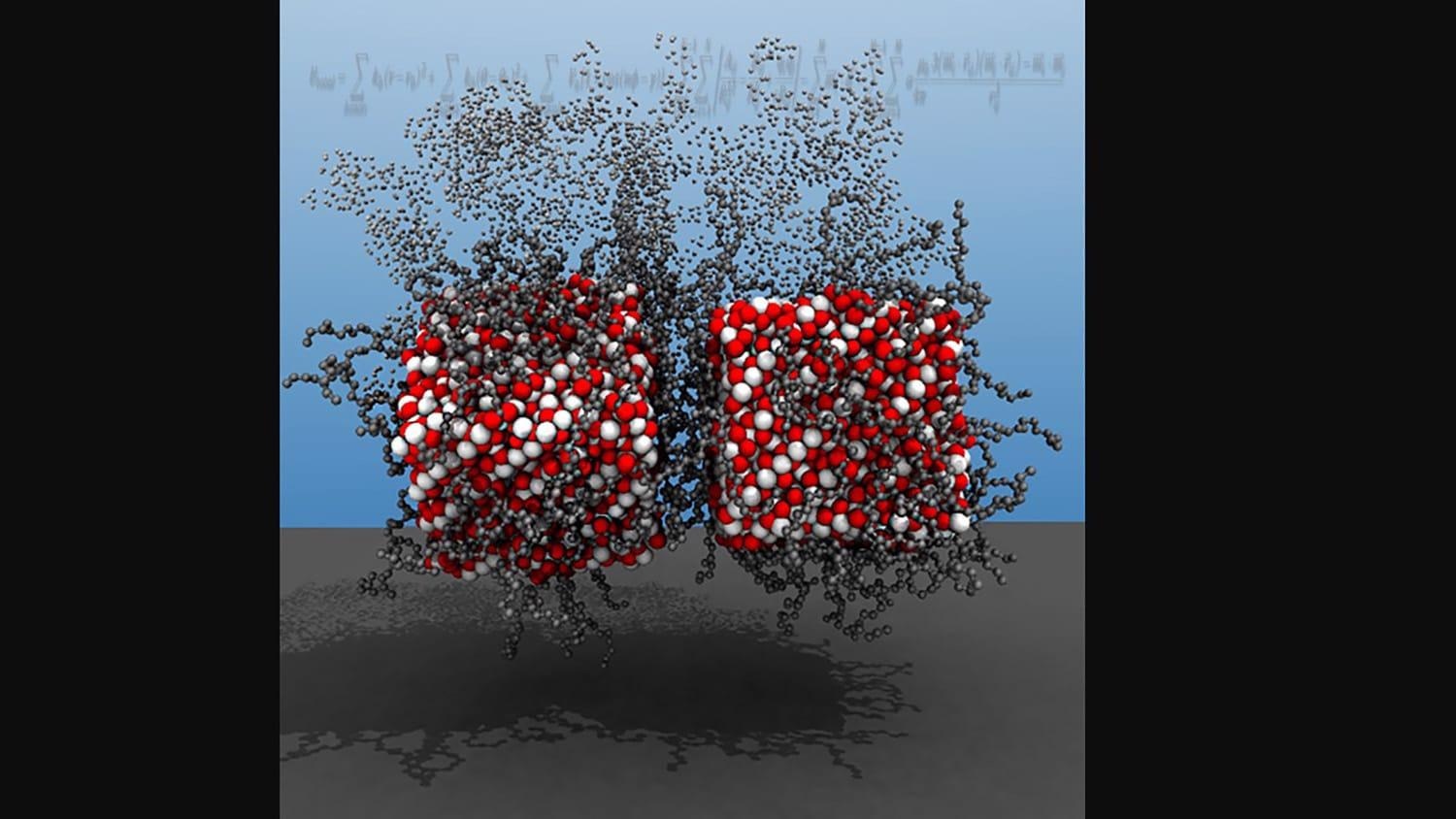A novel computational instrument that enables users to perform simulations of multi-functional magnetic nanoparticles in unparalleled detail was developed by scientists at North Carolina State University. The progress leads the way for innovative work with the objective of developing magnetic nanoparticles to be used in applications ranging from drug delivery to sensor technologies.
 Simulation image showing self-assembly of two MNPs under a magnetic field. Image credit: Yaroslava Yingling and Akhlak Ul-Mahmood.
Simulation image showing self-assembly of two MNPs under a magnetic field. Image credit: Yaroslava Yingling and Akhlak Ul-Mahmood.
Self-assembling magnetic nanoparticles, or MNPs, have a lot of desirable properties. But it has been challenging to study them, because computational models have struggled to account for all of the forces that can influence these materials. MNPs are subject to a complicated interplay between external magnetic fields and van der Waals, electrostatic, dipolar, steric, and hydrodynamic interactions.
Yaroslava Yingling, Study Corresponding Author and Distinguished Professor, Materials Science and Engineering, North Carolina State University
An insight into the nanoparticle’s behavior in complex environments, for example, while using MNPs to send a certain protein or drug molecule to a targeted cancer-affected cell with external magnetic fields, is required by MNPs’ applications. In such scenarios, it is crucial to be able to precisely model how MNPs will react to various chemical environments.
Past computational modeling techniques, which looked at MNPs, were incapable of accounting for all chemical interactions experienced by MNPs — in a provided colloidal or biological surrounding, instead concentrating mainly on physical interactions.
Those chemical interactions can play an important role in the functionality of the MNPs and how they respond to their environment. And detailed computational modeling of MNPs is important because models offer an efficient path for us to engineer MNPs for specific applications.
Akhlak Ul-Mahmood, Study First Author and PhD Student, North Carolina State University
Akhlak Ul-Mahmood adds, “That’s why we’ve developed a method that accounts for all of these interactions, and created open-source software that the materials science community can use to implement it. We’re optimistic that this will facilitate significant new research on multi-functional MNPs.”
The scientists concentrated on oleic acid ligand-functionalized magnetite nanoparticles to establish the accuracy of the new instrument. These nanoparticles have already been investigated and are well-comprehended.
We found that our tool’s predictions of the behavior and properties of these nanoparticles was consistent with what we know about these nanoparticles based on experimental observation.
Akhlak Ul-Mahmood, Study First Author and PhD Student, North Carolina State University
Moreover, the model also provided a new understanding of the MNPs’ during self-assembly.
“We think the demonstration not only shows that our tool works, but highlights the additional value that it can provide in terms of helping us understand how best to engineer these materials in order to leverage their properties,” Yingling concludes.
The study was carried out in collaboration with the experimental group of Joe Tracy, a professor of materials science and engineering at NC State. The research was aided by the National Science Foundation, under grant number CMMI-1763025.
Journal Reference:
Mahmood, A. U. & Yingling, Y. G., All-Atom Simulation Method for Zeeman Alignment and Dipolar Assembly of Magnetic Nanoparticles. Journal of Chemical Theory and Computation. doi.org/10.1021/acs.jctc.1c01253.